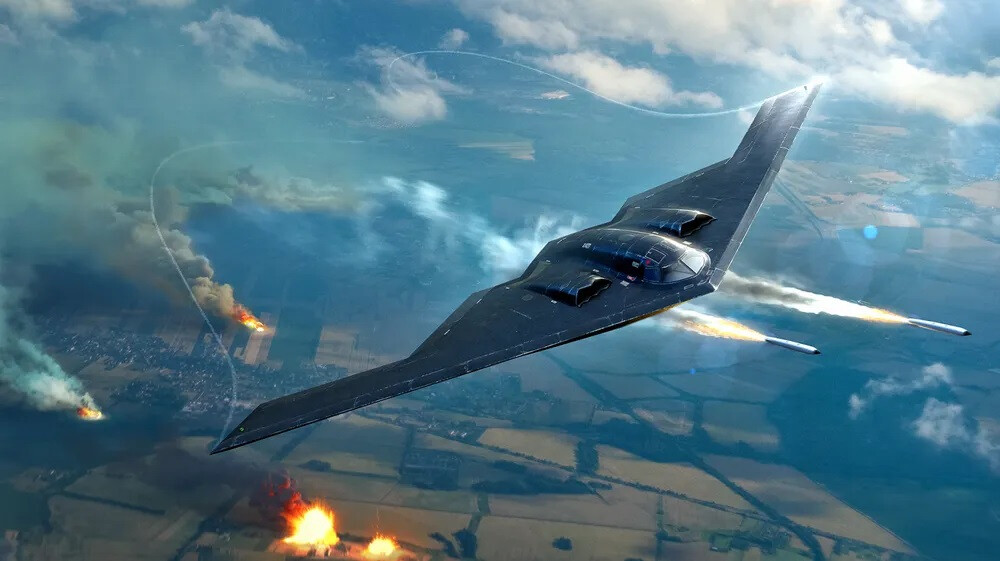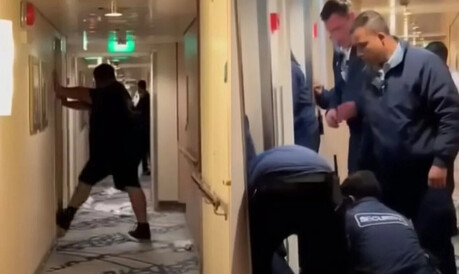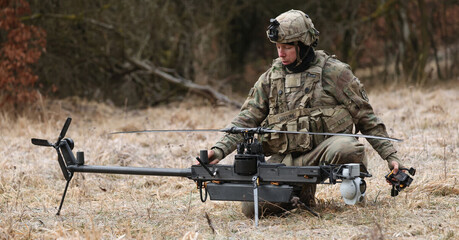
WASHINGTON D.C. – In a dramatic escalation of geopolitical tensions in the Middle East, United States President Donald Trump announced early Saturday, June 21, that U.S. forces had successfully conducted "very successful attacks" on three pivotal Iranian nuclear facilities: Fordo, Natanz, and Esfahan. The swift and decisive action, disclosed via his personal social media platform, Truth Social, signals a profound shift in Washington's direct military engagement in the region, drawing immediate international scrutiny.
President Trump confirmed that the entirety of the munitions payload was delivered to the Fordo nuclear site, asserting that "Fordo is finished." He also confirmed hits on the Natanz and Esfahan facilities. All American aircraft involved in the operation safely exited Iranian airspace and were returning to base, a fact the President highlighted in congratulating "the great American warriors" on their mission.
The precision strikes followed four consecutive days of intensive National Security Team meetings, during which President Trump and his advisors deliberated military support options for Israel amid its ongoing conflict with Iran. The timing of the attack is particularly notable, occurring just two days after the U.S. had reportedly issued a final two-week deadline to Tehran on June 19, demonstrating an unconventional and rapid execution of military force.
Targeted Facilities: Pillars of Iran's Nuclear Ambitions
The facilities targeted represent critical components of Iran's controversial nuclear program.
Fordo, deeply entrenched beneath a mountain near Qom, is widely regarded as one of Iran's most fortified nuclear sites, designed to withstand aerial bombardment. It is known primarily as a high-enrichment uranium storage facility and a core part of Iran's nuclear infrastructure. Despite previous international agreements, the International Atomic Energy Agency (IAEA) reported in 2023 an alarming discovery of uranium purified to 83.7% purity—a level dangerously close to weapons-grade—during an unannounced inspection. Under the 2015 Joint Comprehensive Plan of Action (JCPOA), Fordo was designated for conversion into a nuclear physics and technology center with limited centrifuges. However, Iran began producing 20% enriched uranium there in 2020, escalating to 60% enrichment by 2021, asserting that the 83.7% purity was an unintended fluctuation. The successful targeting of this deeply buried facility suggests the employment of highly specialized munitions.
Natanz, located southeast of Tehran, serves as Iran's primary uranium enrichment complex, housing nearly 70 cascades of advanced centrifuges. This site has been a frequent target of sabotage, with reports indicating significant damage to its centrifuge halls, including underground sections, due to an earlier power cut attributed to an Israeli strike. The latest U.S. assault further exacerbates the operational capacity of this vital enrichment hub.
Esfahan is crucial for providing raw materials essential for uranium enrichment. The site includes a nuclear fuel fabrication facility, inaugurated in 2009, and three Chinese-supplied research reactors. In July 2022, Iran announced plans for a new research reactor at Esfahan. While the IAEA has reported no increase in radiation levels outside the site following recent attacks, previous assaults have impacted centrifuge production facilities, such as the TESA Karaj workshop and the Tehran Research Center, which are linked to Esfahan's operations.
The Spearhead: B-2 Bombers and GBU-57 Bunker Busters
The successful penetration of Iran’s heavily defended nuclear sites was facilitated by the deployment of America's most advanced strategic assets. Reports confirmed the movement of several U.S. B-2 Spirit stealth bombers to Andersen Air Force Base in Guam prior to the strikes, with Reuters corroborating their involvement.
The Northrop Grumman B-2 Spirit, often referred to as the Stealth Bomber, is a heavy strategic bomber designed with low-observable technology to penetrate dense anti-aircraft defenses undetected. Capable of delivering both conventional and nuclear munitions, the B-2 is unique in its ability to carry large air-to-surface standoff weapons while maintaining a stealth profile. With an unrefueled range exceeding 6,000 nautical miles (11,000 km) and over 10,000 nautical miles (19,000 km) with a single aerial refueling, the B-2 possesses unparalleled global reach for precision strikes against highly protected targets. It is the only U.S. aircraft specifically engineered and configured to deliver the massive GBU-57 Massive Ordnance Penetrator (MOP).
The GBU-57 MOP, weighing approximately 30,000 pounds (13,600 kg), is the largest non-nuclear bomb in the U.S. arsenal and is specifically designed to neutralize deeply buried and hardened bunkers and tunnels. Its formidable capabilities allow it to penetrate an estimated 200 feet (61 meters) of earth or up to 60 feet (18 meters) of reinforced concrete before detonation. The bomb's casing is constructed from high-density Eglin steel alloy, enabling it to withstand extreme stresses during deep penetration, while GPS/INS guidance ensures pinpoint accuracy. Each B-2 bomber can carry two GBU-57s, making it the most potent weapon system for attacking subterranean facilities like Fordo.
The deployment of these assets to Guam underscores the island's immense strategic importance. As the largest of the Mariana Islands, Guam provides a protected harbor and expansive land for major airfields, making it a critical logistical hub in the Indo-Pacific. Located strategically between Hawaii and Asia, Guam serves as a vital staging area for U.S. forces, housing significant ammunition and fuel storage, as well as intelligence, surveillance, and reconnaissance (ISR) capabilities. Its enhanced role reflects growing tensions with China and the need for robust power projection capabilities in the region.
Geopolitical Landscape and International Reactions
The U.S. airstrikes inject profound uncertainty into the already volatile Middle East. President Trump's campaign promise of minimizing foreign intervention, encapsulated by his "MAGA" (Make America Great Again) slogan, now contrasts sharply with this direct military engagement. White House Press Secretary Caroline Leavitt announced that President Trump is scheduled to deliver a national address at 11:00 AM KST on June 22 to further elaborate on the intervention. Leavitt, who previously served as an assistant White House press secretary and press secretary for Trump's 2024 campaign, assumed her current role in 2025 as the youngest White House Press Secretary.
President Trump’s declaration that "now is the time for peace" and his urging that "Iran must agree to end the war" attempt to frame the strikes as a means to de-escalation rather than outright conflict. However, the international community's response has been mixed.
The International Atomic Energy Agency (IAEA) Director General Rafael Grossi previously warned of a "dangerous degradation" of nuclear safety and security at Iranian nuclear sites due to previous Israeli strikes, emphasizing the risk of radiological release. While IAEA inspectors remain in Iran, their access has been increasingly limited, and cameras at some facilities were removed after the U.S. withdrawal from the JCPOA.
Russia condemned previous Israeli attacks as "unprovoked" and a "violation of the UN Charter," while China expressed "deep concern" over potential serious consequences. Both nations, signatories to the JCPOA, have advocated for diplomatic solutions, with Moscow even offering to remove Iranian nuclear material for civilian purposes. Iran, for its part, has reiterated that it will not discuss the future of its nuclear program while under attack and views any demand for "zero enrichment" as a "poison pill" designed to scuttle negotiations.
Regional stability is also a significant concern. The Gulf Cooperation Council (GCC) has previously condemned strikes on Iranian territory as violations of sovereignty and international law, fearing that U.S. military installations in their territories could become targets of retaliation, unwillingly drawing them into a broader conflict. Reports from Iranian state media indicate civilian casualties and damage to agricultural areas from prior attacks, with over 3,000 people reportedly injured since the start of Israeli strikes.
CNN has reported that President Trump has stated there are "currently no plans for additional airstrikes," a statement aimed at curbing immediate fears of broader escalation. Nevertheless, global attention remains acutely focused on whether these decisive U.S. actions will indeed lead to a "historic moment" for peace, as envisioned by President Trum
[Copyright (c) Global Economic Times. All Rights Reserved.]




























